Tondo Library
“I can do that”
, because
“You!”
“Paint like a baby”
Indeed …
Can you,
still?
About The Library’s Name
Toddlers (1-2years old) begin to make drawings that include:
- horizontal and vertical lines
- multiple loops and spirals
- roughly drawn circles
- shapes that resemble letters T, V and P
The title points to the toddler stage of child development, but paint like a baby sounds simple better.
| unknown 1-2 years old toddler two examples |
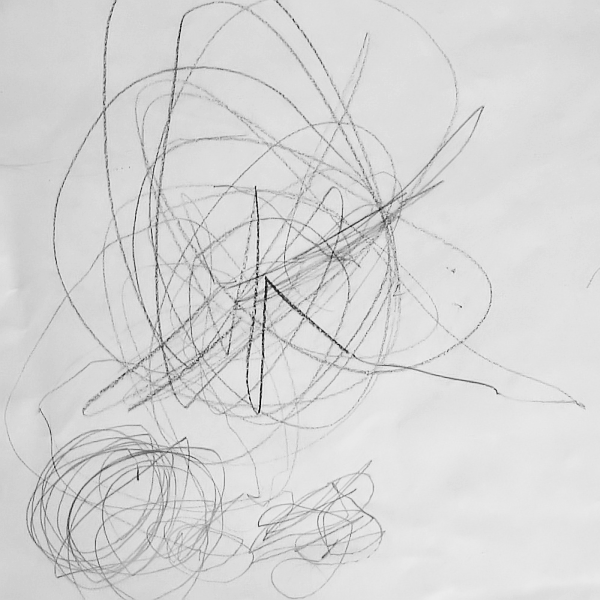 |
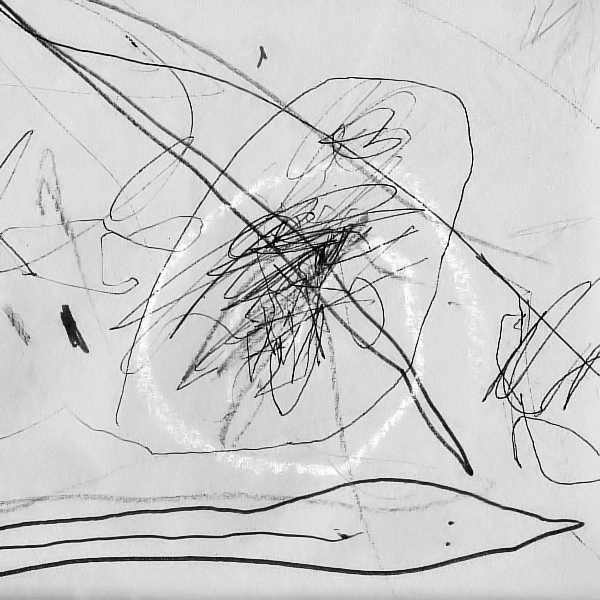 |
The main concern in this age-period seams not to circle around understanding abstract social accepted conventions, yet of konkrete nature.
From here following concepts for “Paint Like A Baby” have been extracted:
- scattering, uncoordinated lines
- inaccurate circles and spirals
- a circle based pseudo lettering
- the main concept of making a round thing,
drawing a circle in a circle
The idea to use the tondo format basically develops out of those concepts.
The general approach is to re-enact a child’s experience as an adult person via programming, and make it reenactable for other adult persons through a social interactive platform.
This Library Prerequisites
The research methods are seriously Dada poetic, rather than serious scientific obstruction. In other words this is artistic endeavour following the guidelines of tender holistic research methods.
| lieschen mueller © Nov 2024 |
fragment, write, and line method | 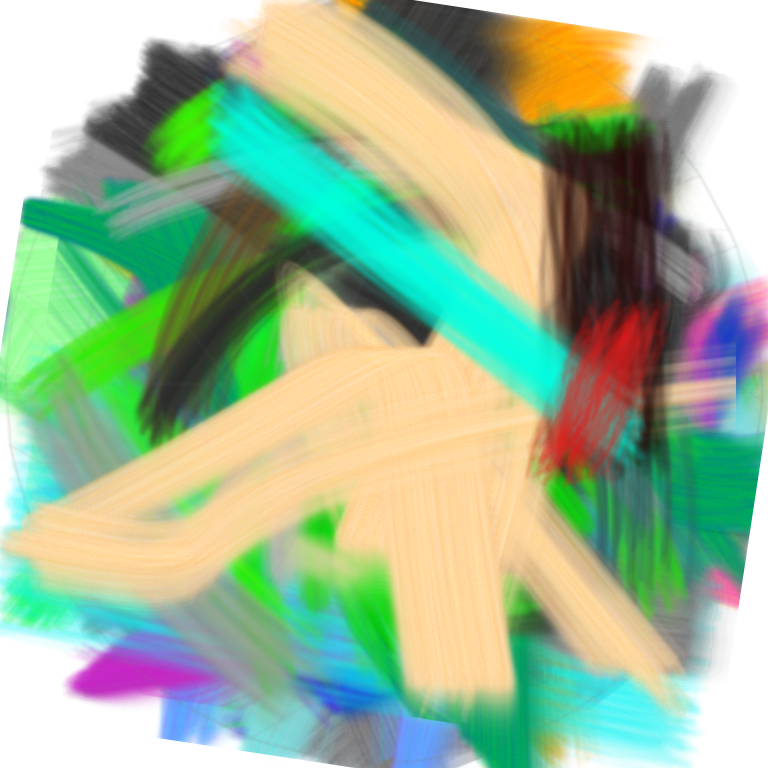 |
tweetRandom
Originally developed to transform a specific X-tinct social media into interactive data for bot-use
tweetRandom -> transfers text into random numbers
Combined with a login it provides stable user-ids and user-data, such as email, bio, etc.
The user’s id and data are utilized as modifiers; it is the input text which seeds the largest amount of the randomness, though.
The tweetRandom library allows to modify user-data and update the text input value in a constant flow, like a conversation. Therefore it is obvious tweetRandom not only can produce static pictures or one-source animations, it can be used to perform interactive illustrative artworks of text-based processes such like conversations, track people in environments and other datasets.
Within tweetRandom lies a strong binding to any speech, spoken words, written text and reading culture, but also any data consumption in any media - all delivered ready of hands. Communication relies on structure data. This is the reason why any resulting random actually contains hidden pattern variations. It inherits the meaning of the message, transfers it’s communication flow into a stream of numeric values.
| lieschen mueller © Nov 2024 |
write, circle, and line method | 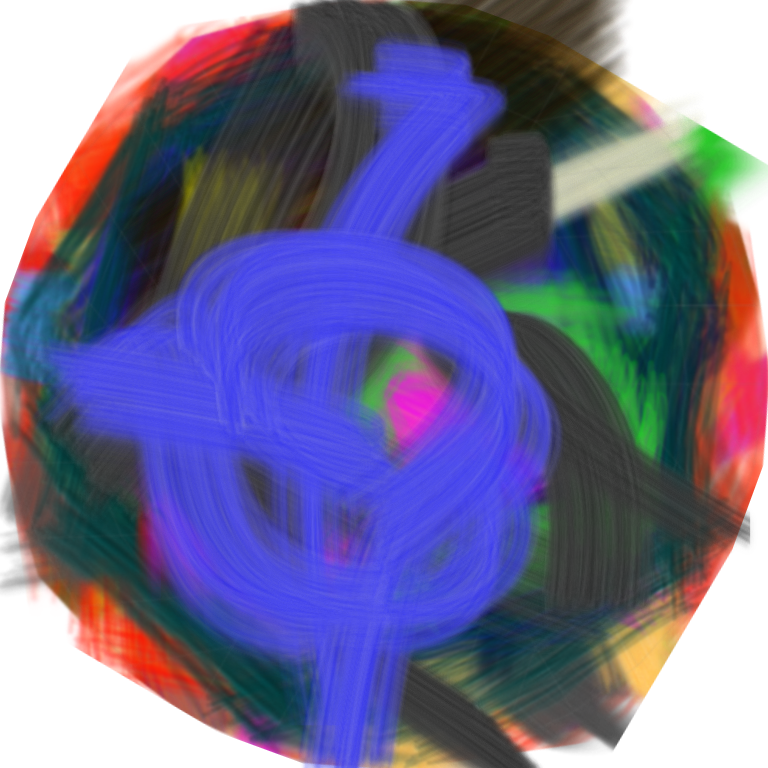 |
Older Researches And Findings
From the earliest experimental rewrites of social networks to the latest research like “account and counting”, even this is a search of “painting is like writing”. Less visible, but in it programmatic nature, it uses writing mechanics by emulation in a collection of programs aka also known as a library and recombines them.
| lieschen mueller © Nov 2024 |
fragment, circle, and line method | 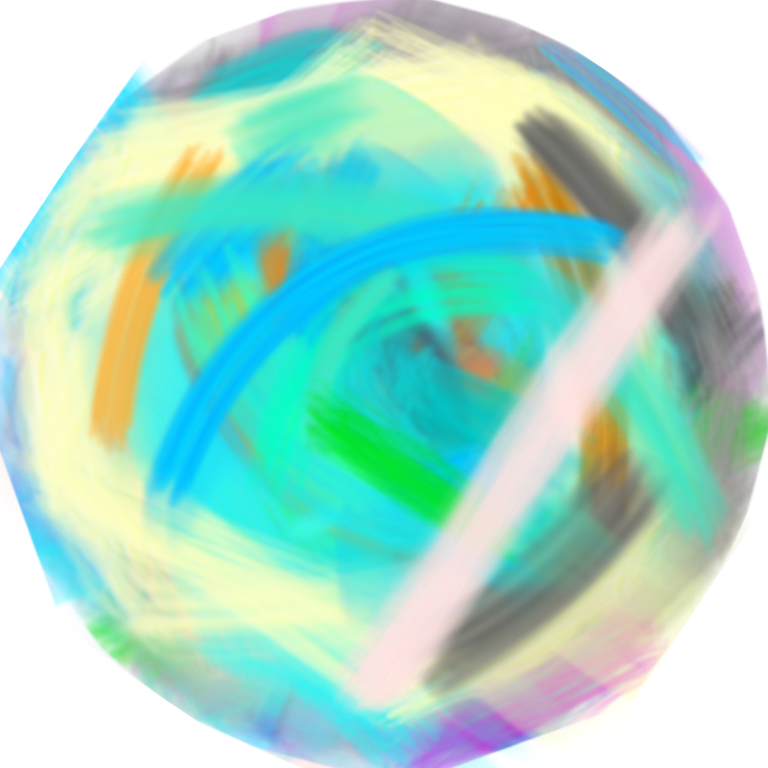 |
JavaScript And HTML
The choice of the programming language enables certain features, hence easy access as a web-component has to pointed out here, and it limits with it’s own restrictions. This channels the human mind, avoids the wandering around in the world of to many wonders.
| lieschen mueller © Nov 2024 |
fragment, circle, and write method | 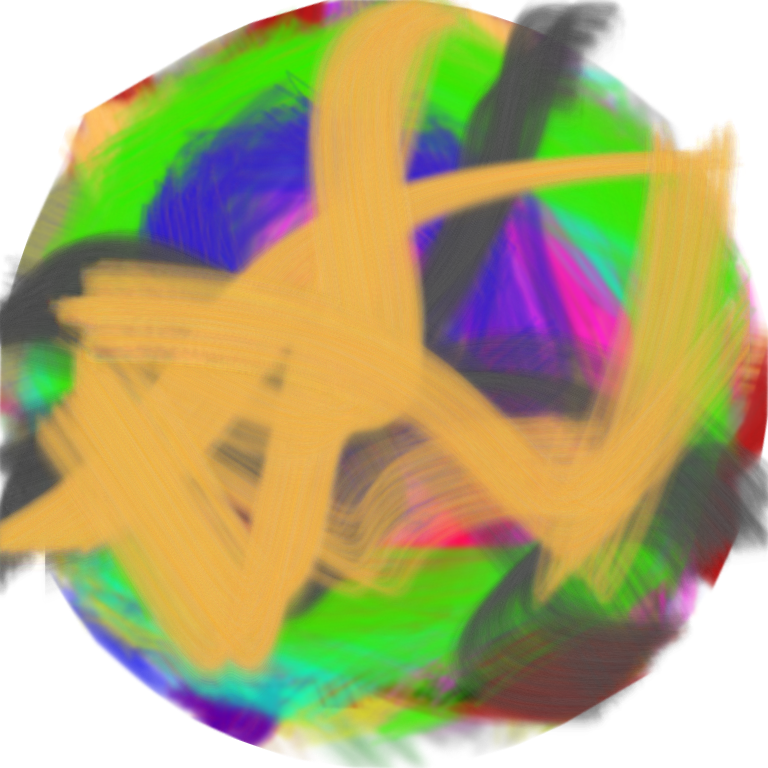 |
The Tondo Format, Grid-based Graphic Operations
… and what it changes compared to a rectangular format, specifically like a square.
The tondo format - a round circle-shaped “canvas”. Here indeed it is the transparent, circle-masked square of the JS HTMLCanvasElement.
It revaluates the term grid, as it provides it’s very own unique geometry.
Circles do come with a multitude of possible “grids”, pie-carts, rings, written in or outlined shapes like triangles, squares, etc.
A reflection of it’s basic centralised geometry for all numbers fractions, the union nature of the unit circle.
PI based, starting on the right turning clockwise, a critical cultural anticipation, a hint of time.
| lieschen mueller © Nov 2024 |
write and circle method | 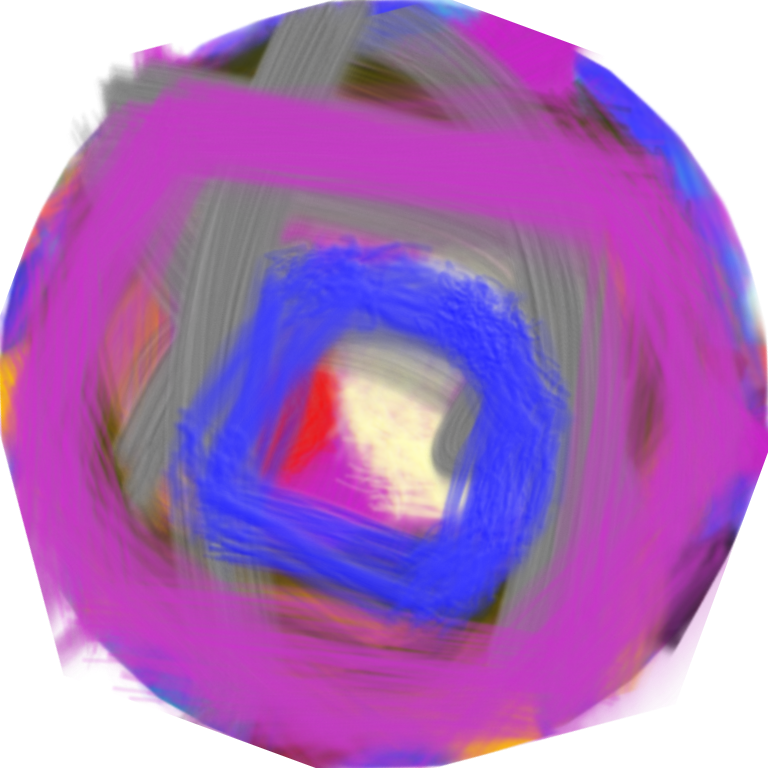 |
Commentary-Platform Comment And Chat
The Commentary-platform shared and comment functions are used for the implementation of the slow-conversation, which drives the final experience of the “PaintLikeABaby”-library.
Meanwhile “Commentary”’s chat functionalities have been evaluated, yet, further aren’t implemented in the actual version.
| lieschen mueller © Nov 2024 |
write and line method | 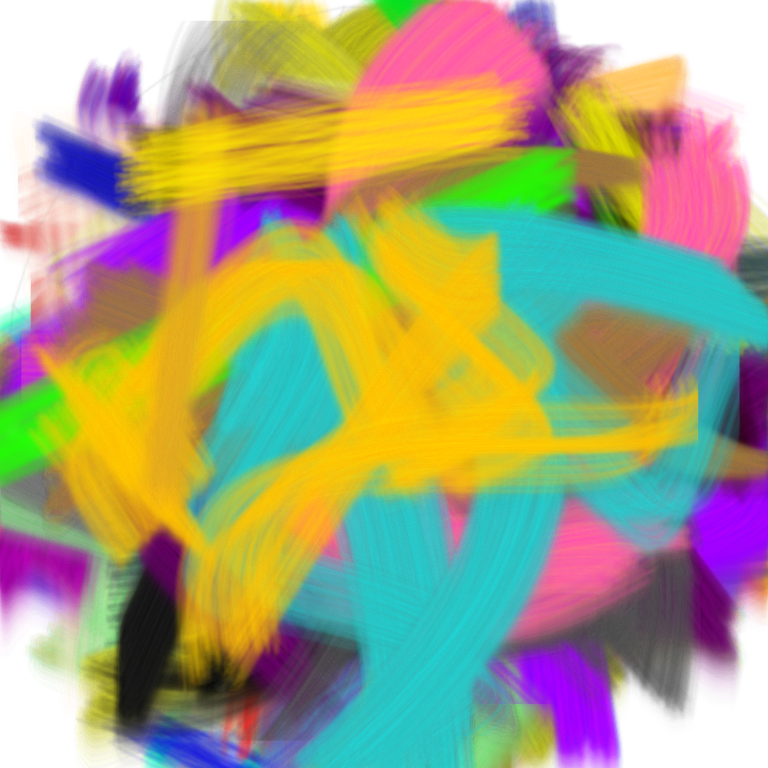 |
The Motto, Statement
The dwarf-minded ones will never guess it,
educated guests,
but, when the Elf draws the twelve,
there is beauty to imagine.The painting of an image dwells in pictures,
because a piece of good conversation
always and anywhere
is by chance a possibility.
| lieschen mueller © Nov 2024 |
circle and fragment method | 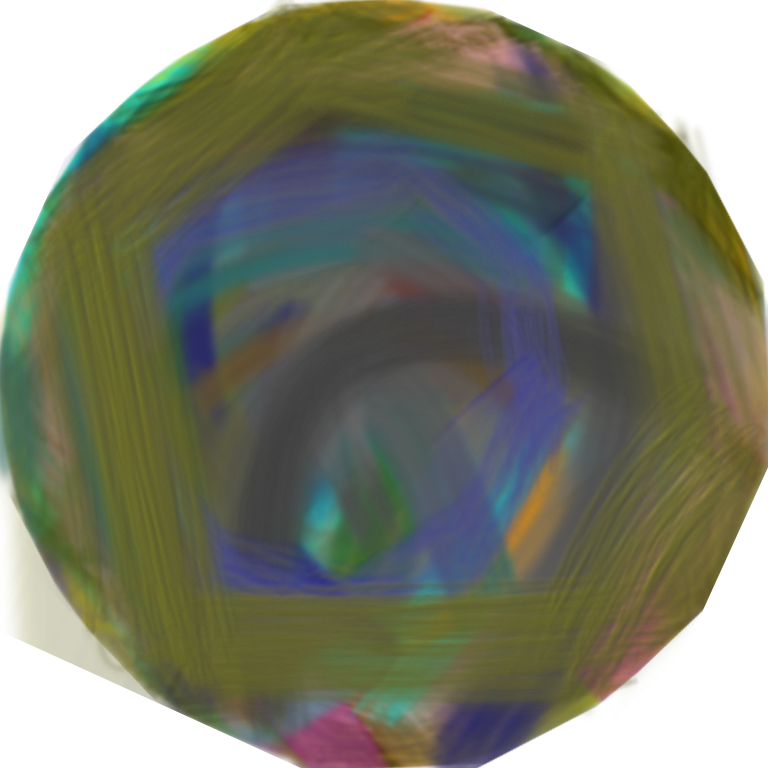 |
General Settings
tweetRandom provides two default modes, which both generates a time-based pseudo user-id hash and a pseudo email address. Both are not static on reload of the webpage.
The first mode looks the webpage, where this lib is embedded, for other scripts and uses them as user-input. In this moment the program had become self-referential. The execution of the program now relies on it’s own source-code.
The second mode looks for a specific html-tag-id “commentary” in the page and replaces the source-code with this text.
For all experiments the later mode has been the chosen one.
The poetic idea of childhood’s wonderland.
Cretan linear-A disks, records, CDs and DVDs, the old-fashioned clock, the typical human starters’ drawings, paintings, all those are motifs of motivation to choose the tondo format, because of and besides their historical or nowadays means.
| lieschen mueller © Nov 2024 |
circle and line method | 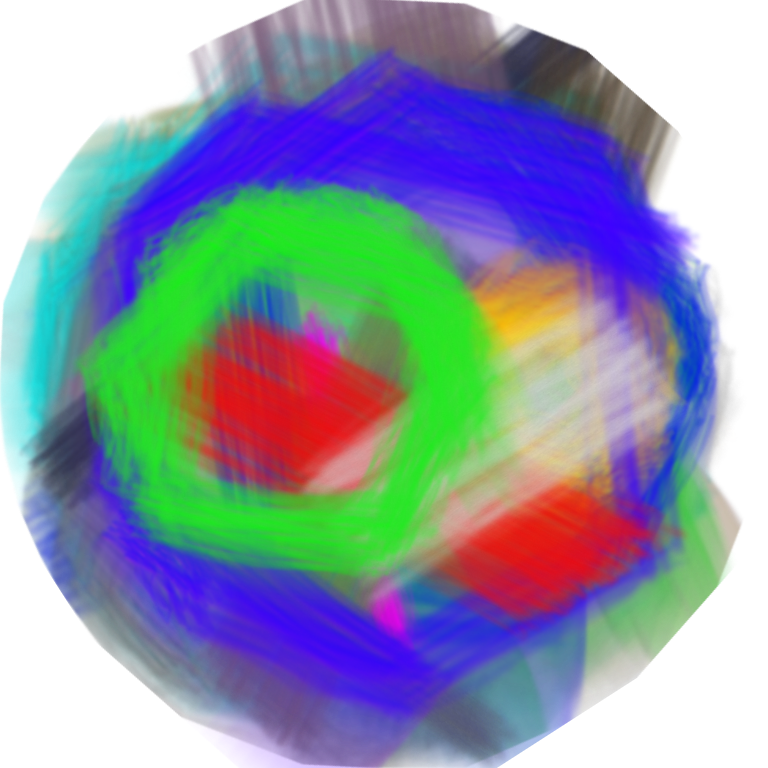 |
Developing A Library
The two necessities for a library of generators are,
- using the in an other context like social media.
- combine them with other libraries to enrich, enlarge
the compositional range. - documenting the variety of an theme, which is not a
necessity.
The “paintLikeABaby”-library started as a simple standalone program of the fragmented circle algorithm. The prototype are called somewhat like “draw.like-a_baby”.
The script part has been extracted in a script and embedded into a central webpage.
In the next step three more idea’s of similar approaches risen in standalone, to be optimised first in appearance and methodises and than to be embedded as a library-script into the central page, while the commonalities like the canvases, colours and some functions have been stripped from all method-like library-scripts and placed into the global library script.
All painting-method script have their own initialising, create and looping update functions. They control their own slightly different animation and effects loops, before they give back the control to the central script, which chooses what to come next.
| lieschen mueller © Nov 2024 |
line and fragment method | 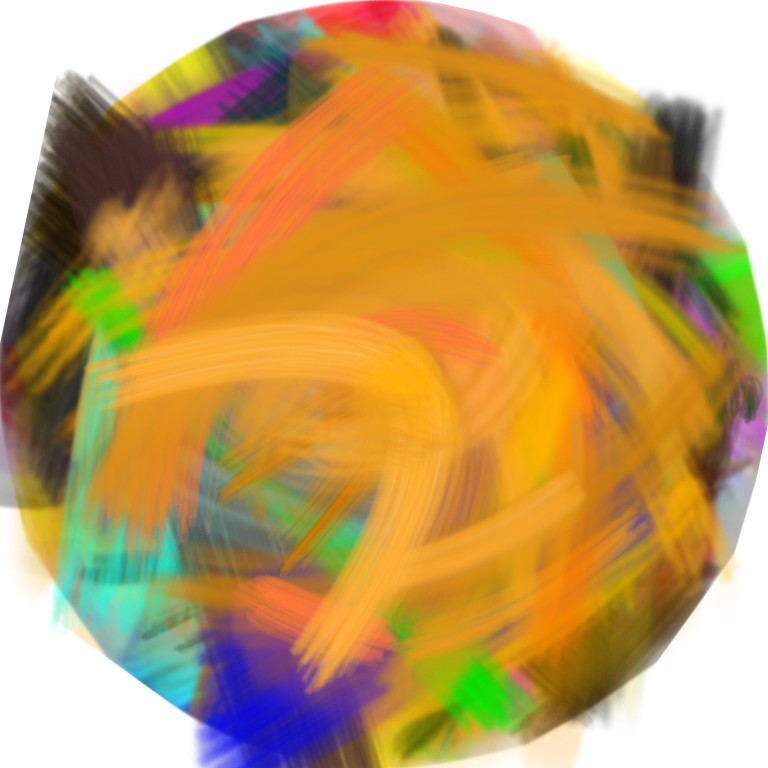 |
Implemented Features
- basic html ground, the embedding webpage
with it’s choice script - the given: tweetRandom
- the global’s: shared functions, components and variables
- the specific painting methods:
- fragments of a circle aligned
- almost a circle tangents
- joined tangents of inner circles
- writing on a ring grid calligraphy
- crosslines filling the circle
- drawing a spiral in- and outwards
- turning the canvas clock- or anti-clock-wise
As any method-script provides an animation sequence of brush-stroke and possible turns of the canvas depending on their own optimal rules, this library is optimised for a comment-based slow conversation, yet not a chat. If a library is used in chat, an immediate response is preferred - even a single animated brushstroke is quite slow. In other experiments it has already be validated that single not animated brushstrokes fulfil the purpose of an chat.
The whole “PaintLikeABaby” provides a 10 to 15 minutes long animation sequence, with every sequence of a single painting.method lingers around 5 to 40 seconds.
Each of the next 4 methods are an emulation sharing JS-Bezier-curves, and a failed attempt, to “PaintLikeABaby”. Algorithms aren’t that open minded.
| lieschen mueller © Nov 2024 |
write and fragment method | 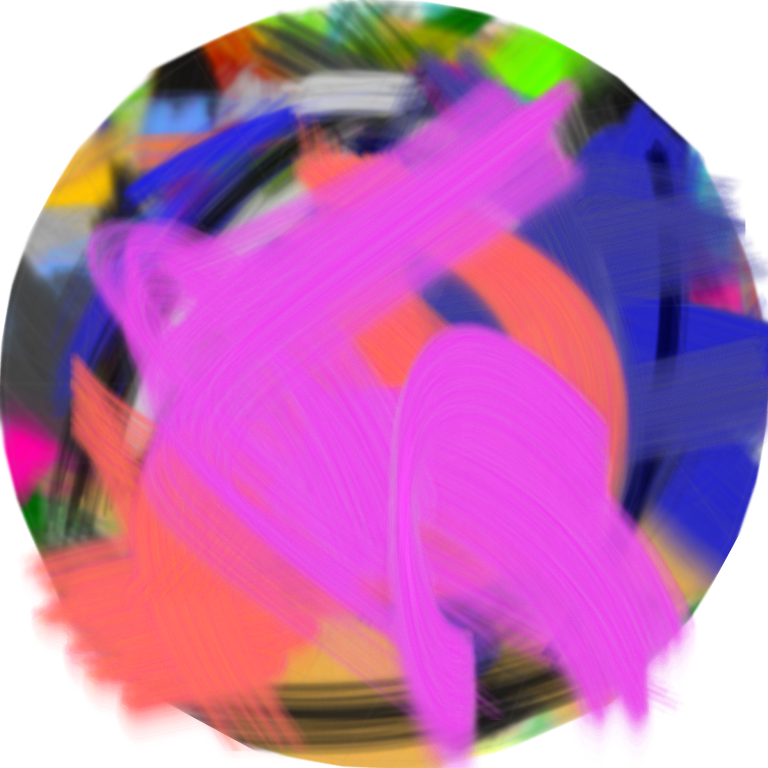 |
Fragments Of A Circle Aligned
Without any rotation applied to the brush-layer, this starts always at the right point at zero PI. It creates fractions of ellipses with the same radius like the tondo. The algorithm tries to repaint the outline of the tondo-shape, but it produces a shattered line of fragments instead.
| lieschen mueller © Nov 2024 |
Fragments Of A Circle Aligned | 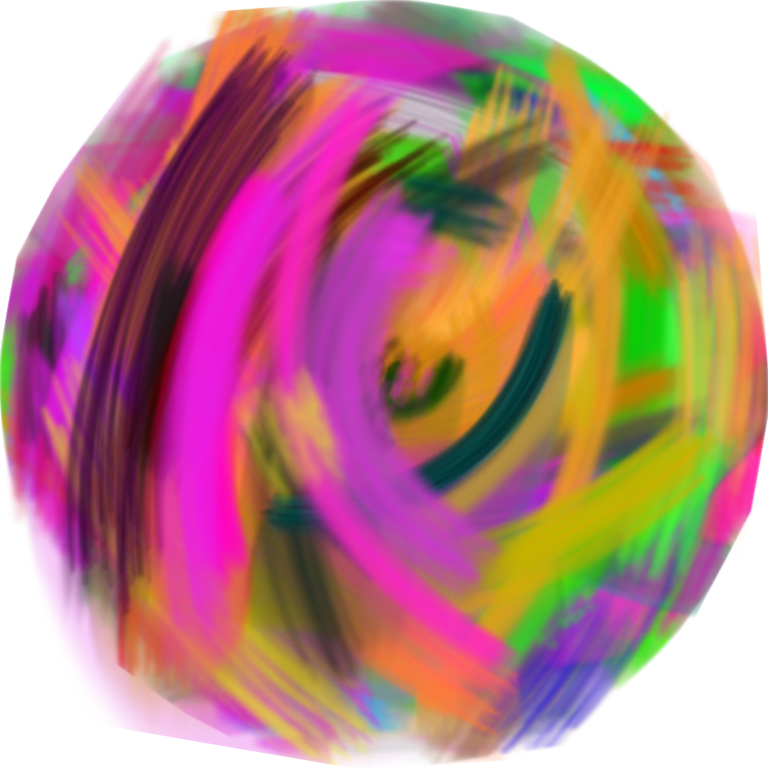 |
Almost A Circle Tangents
This comes closes to a circle. Almost straight, but bending “tangent” lines, draw a polyline along a circle which lies in the tondo circle. The maximum ideal radius is the radius of the tondo circle itself.
| lieschen mueller © Nov 2024 |
Almost A Circle Tangents | 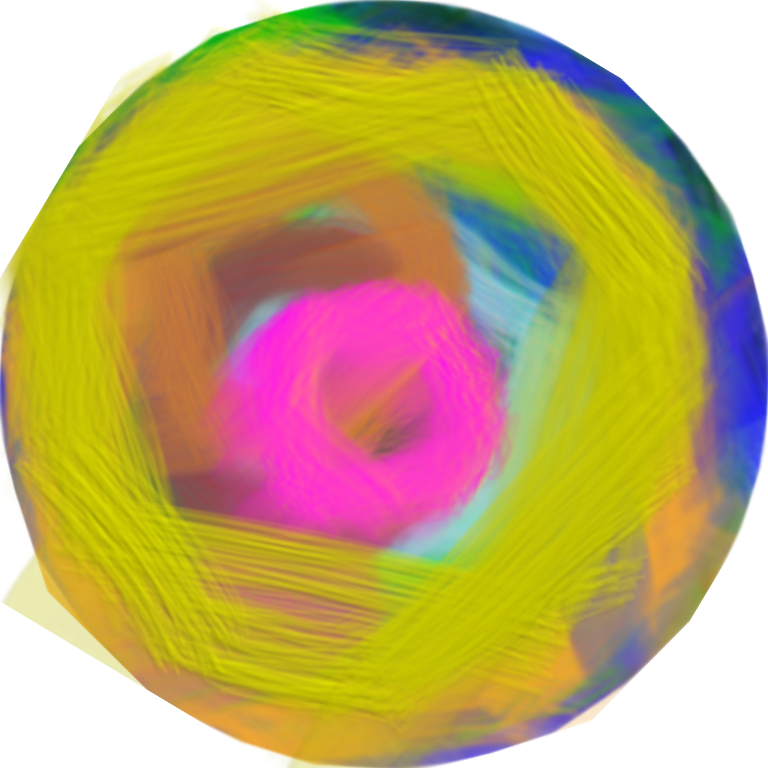 |
Joined Tangents Of Inner Circles
These a almost straight lines, all defined as a tangent of an inner circle, yet their connection is not end- to start-point like above. The “tangents” have to intersect, cross each other in sequence. This is clearly an imperfect way to draw a circle, while in an other presentation it looks like a suprematistic composition.
| lieschen mueller © Nov 2024 |
Joined Tangents Of Inner Circles | 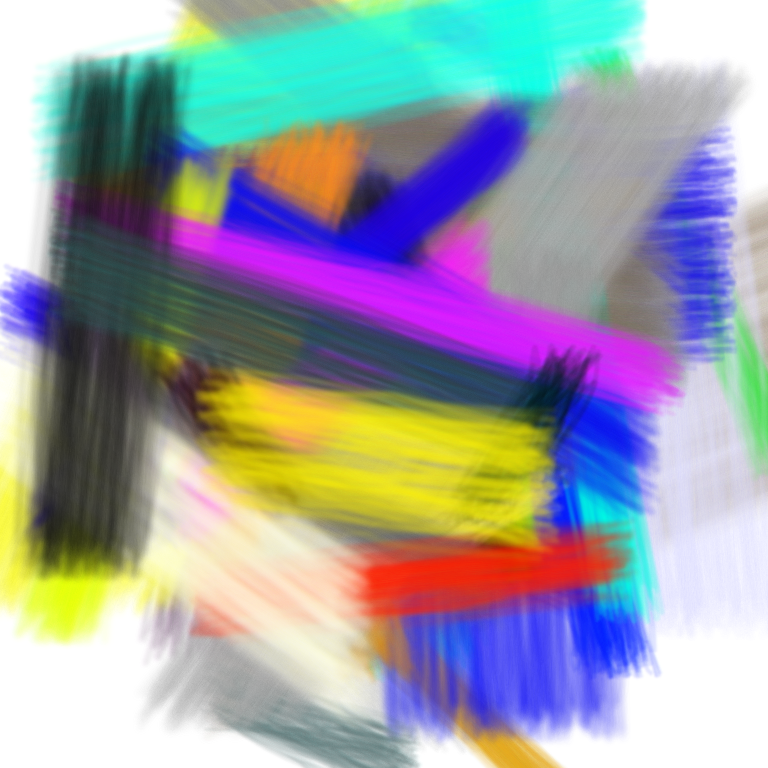 |
Writing On A Ring Grid Calligraphy
Most freely attempt to paint a circle, though most strictly by it’s rules. In a rings and triangles based grid - the inner ring divides into 6 triangles, for each ring 6 triangle will be added (6, 12, 18, ..) - a pseudo alphabet paints calligraphy-like figures connecting points from the grid. It tries to fill the tondo as a whole rather drawing it’s outline.
It is a misinterpretation, that toddlers already would start to imitate characters or invent their own letters, while on the other hand it is assumed they just try to make structured marks.
One has to point out, that the discussion is highly biased by adult interpretations, if not misunderstanding. While it is argued the p, t, and v are no sign of toddlers imitation of simplest, highly abstract concepts of bodies or writing, though these shapes are called mark-making, which is writing by itself, in it’s own right. Determent toddler would be interest in rather konkrete than abstract concepts, these two points do confuse: the wording used in the discussion is abstract, not konkrete, which shows even adults do not understand the distinctive differences of meanings and that the very next step in a child’s development of drawing is head-footers or even qualified stickmen-like bodies leaving out the step in between.
From this reasonably the calligraphy-pseudo-letters alphabet has been introduced. It’s nature is a artificial, meaning-less, konkrete algorithmic collection of character like shapes, with the appearance of, yet not imitating calligraphic lettering.
The final result writing on a grid is shown here,
the grid can be seen at the “Turning The Canvas Clock- Or Anti-clock-wise” chapter.
| lieschen mueller © Nov 2024 |
Writing On A Ring Grid Calligraphy | 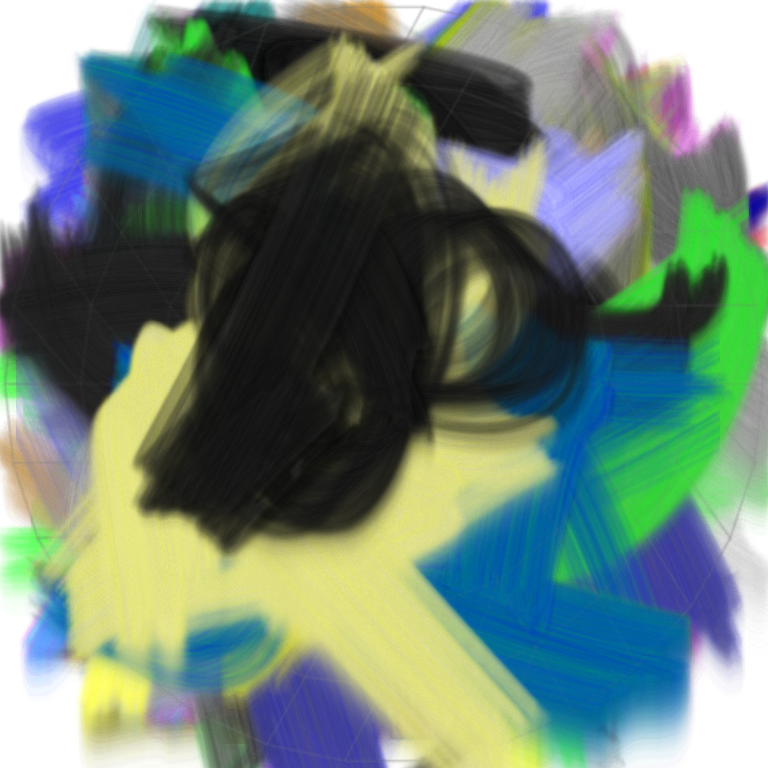 |
crosslines filling the circle
Another attempt of filling the circle, which mimics painting, drawing like a baby aka toddler. As we all know is it possible to define a shape by two ways, the outline and the filled shape.
| lieschen mueller © Dec 2024 |
crosslines filling the circle | 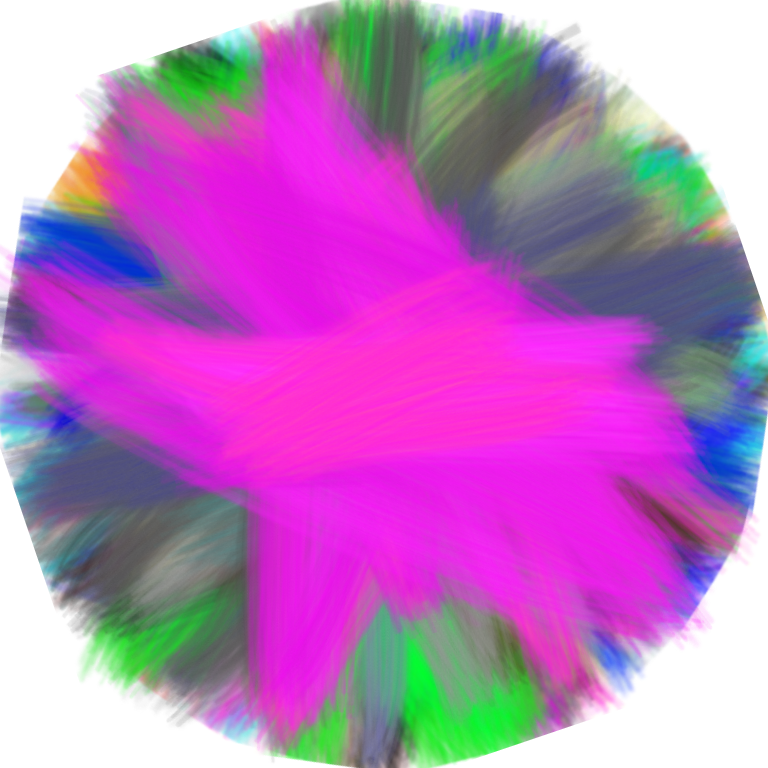 |
drawing a spiral in- and outwards
Beyond circles, straight and crossed lines, toddlers come up with spirals. Now this method currently last attempt finishes the variants, that roughly picturing, what can be found in the above two inspirational toddlers’ images.
| lieschen mueller © Dec 2024 |
drawing a spiral in- and outwards |  |
Turning The Canvas Clock- Or Anti-clock-wise
Besides rotating the brush orientation around the tondo center, turning the canvas from time also obfuscates the grid operations very well. It is an improvement for the animation sequence to, introducing an interruption in the constant flow, making the sequence more interesting, attention grabbing.
| lieschen mueller © Nov 2024 |
an example for grid of rings | 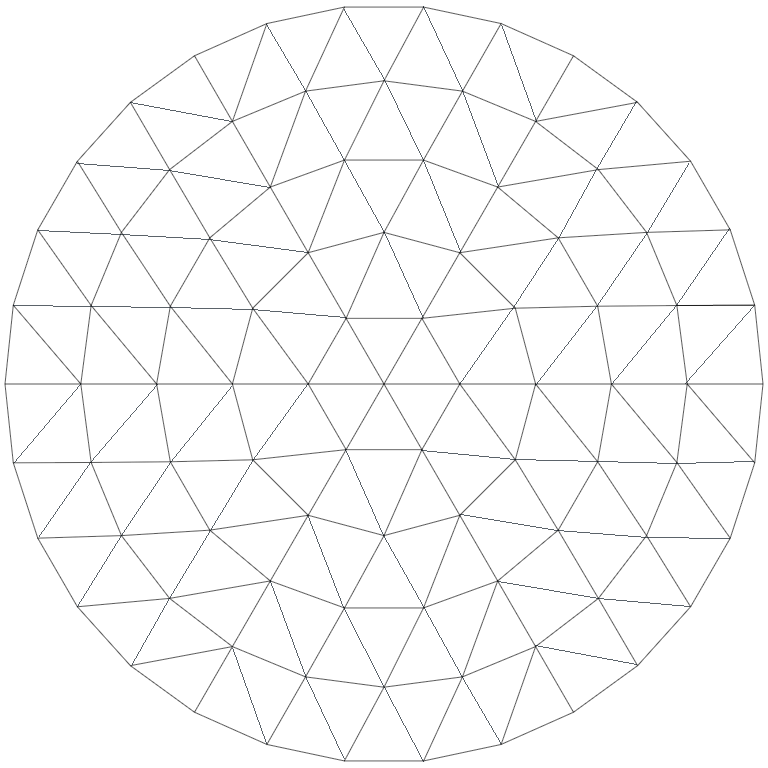 |
The Brushstroke And Other Effects
All brushstrokes within a single figure use the same base-colour,
but potentially different shadow-colours.
A brushstroke is a overlapping multiline along a given ideal path.
Each single line varies in thickness, bending and positions.
At any time an underlying wet-effect comes with the direction and timing of the stroke,
sometimes dry, mediocre, or wet.
A pre-set list of colours is defined. Optional a specific set of none to three priority colours is selected and one of those is chosen with a likeliness of 50%. Otherwise any other colour is chosen, but not the last one again. The current shadow-colour can’t be the chosen base-colour.
| lieschen mueller © Nov 2024 |
Painting methods fragment, circle, write, and line combined |
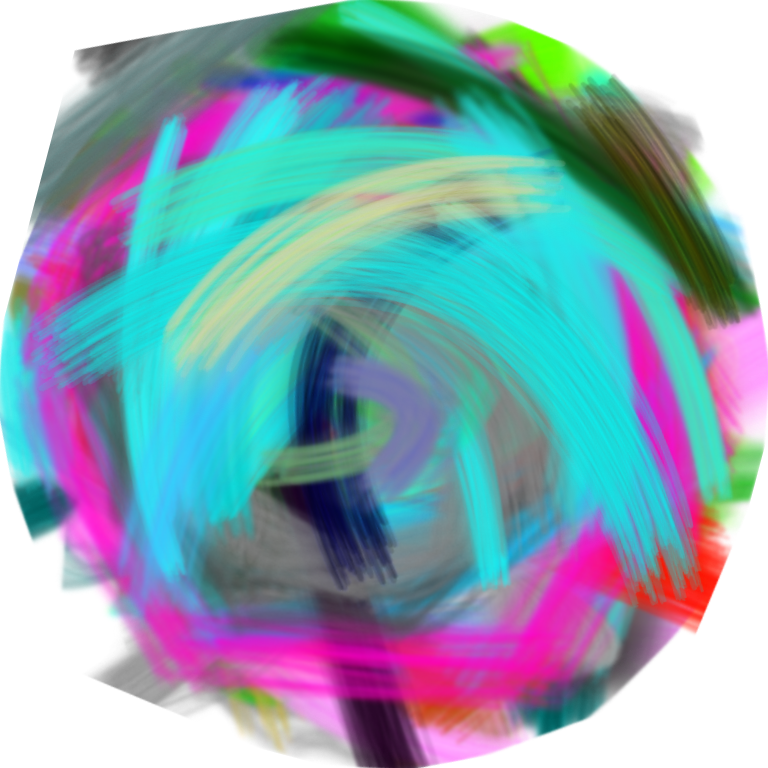 |
What Differs From “account and Counting”
Having strongly it’s own poetic motivation, this library still comes with grid-based operations.
In fact, it does rely even more on grids, yet not one, but for each painting method on a different one. Something is contributed by the geometric nature of the circle.
The square-based “account and counting” relied on a horizontal-vertical
grid of sub-squares with linear counting sub-grid - divisions.
Though every drawing function in the tondo-library is strictly speaking a writing operation,
the overall composition appears to be a free improvised painting.
The literacy is way more hidden compared to the “account and counting” research.
| lieschen mueller © Aug 2024 |
An example of “Account and Counting” | 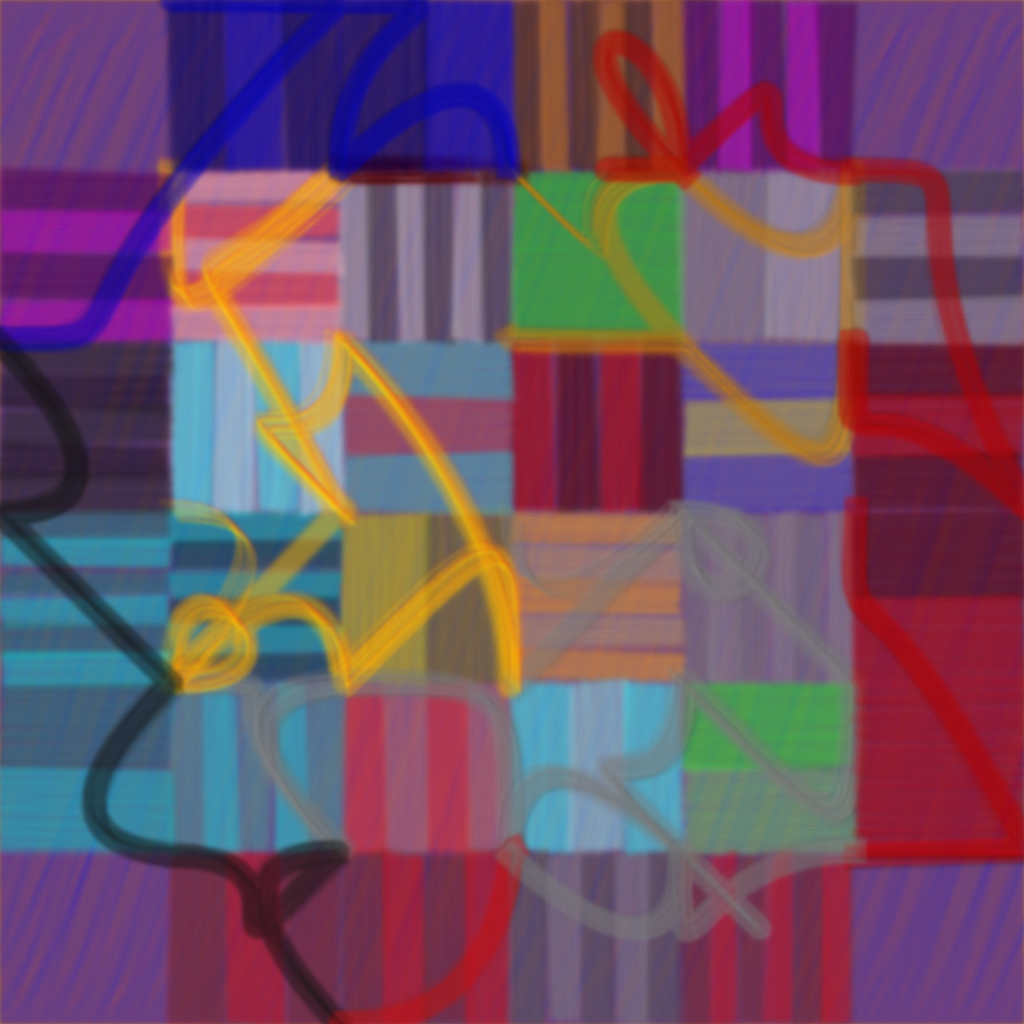 |
The Social Environment Implementation
A re-enactment of freedom - like in free beer, my deer.
A none public test of a future public instalment of a social interactive commentary platform. Please, do not abuse this test by using any “emails” of offensive nature. Stay polite, friendly minded and avoid, unnecessarily to mention, controversy. This is not a “political” confrontation platform.
Commentary has three major features, a 3d web-gallery with interactions like sharing and
virtual collecting images and sculptures. New images are create by the prior user’s
interaction-recording and the combined current user and prior user-data-sets.
in the hunt
A create images by chatting platform, a fast conversation. The chat has a global login, but isolated chat rooms for two to three people. Each person triggers just one brush stroke, square, action per input. The ongoing conversation paints the picture. When the conversation ends, the image is done. The implementation experimentally utilized the square-one lib, which doesn’t animate the brush strokes.
| lieschen mueller © 2022-2024 |
A test run of Commentary Chat Version |
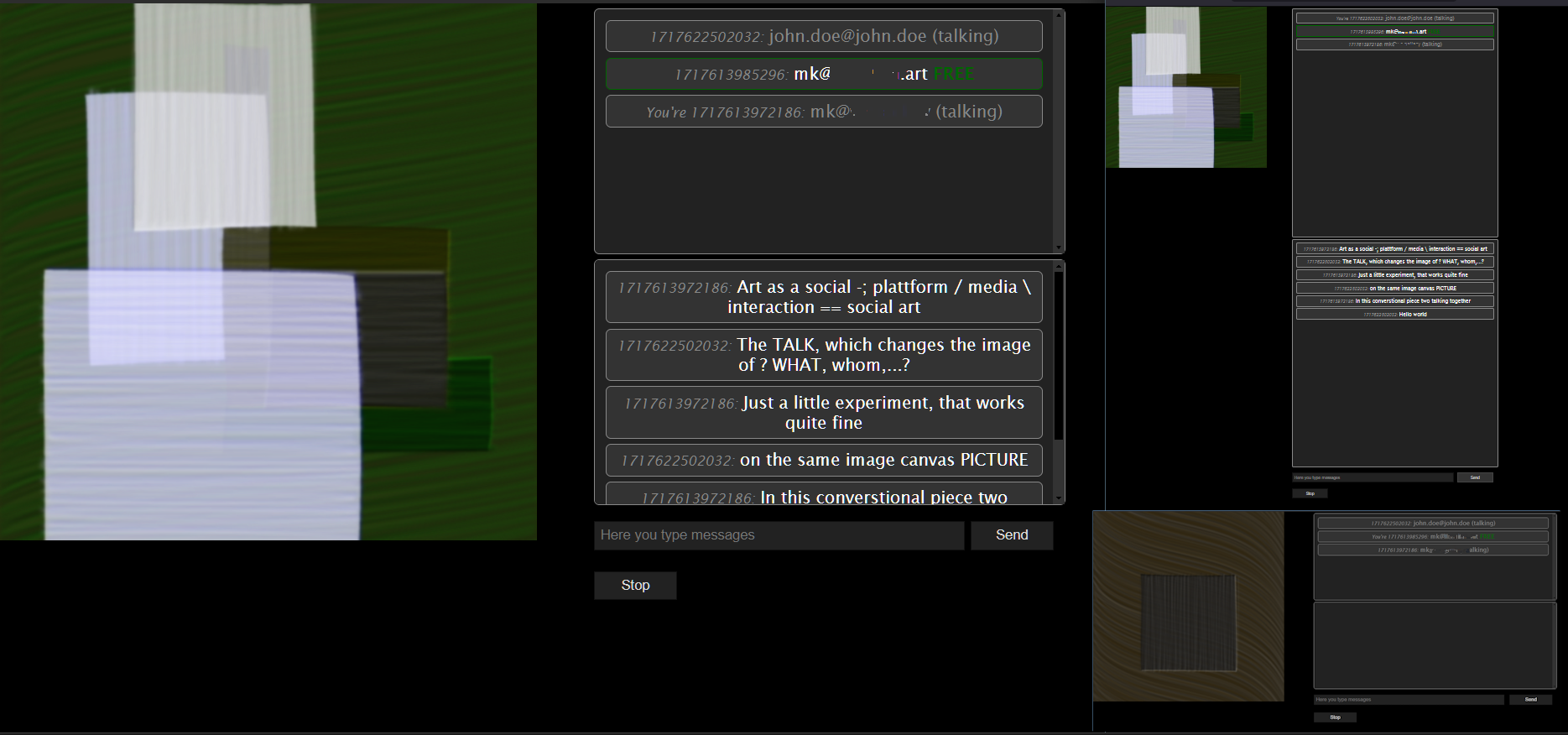 |
The last optional implementation is this one, the pure comment function. The conversation speed is slowed down here and limited to one person per time. The comment function offers likes, reposts, user profile views, image popup, besides writing comments. Especially the associated data-model mimics basic twitter features and can be used for bots.
“Commentary” features run against a local server with a database.
The final goal for “Commentary” is to combine all three abilities into one fully integrated 3d-web gallery with chat, comment and generating images, sculptures and animations - live and replay. “Commentary” may choose from different libraries and mix those functions to create media.
Implementing the “PaintLikeABaby”-library into the “Commentary”-platform enables a slow-conversation via the comment functionality. One comment triggers a new animation sequence and store the final result in a gallery. While the animation lasts, the comment function is disabled. Older pictures with their source-comment, user-id and - data can be reviewed in the gallery-page.
This demonstrates, interactive speech/text-based media can be used/seen as writing, as painting or as an artwork. More recently it might illustrate the infancy state of our all social behaviour. Hence, the warning, probably not either, because it (un-)answers the questions,
- ”?”
- “What is art?”,
- “What is an artwork?”,
- “Can you -still- paint like a baby?”
because any algorithm can’t.
| lieschen mueller © Dec 2024 |
commentary with embedded PLABA-library | 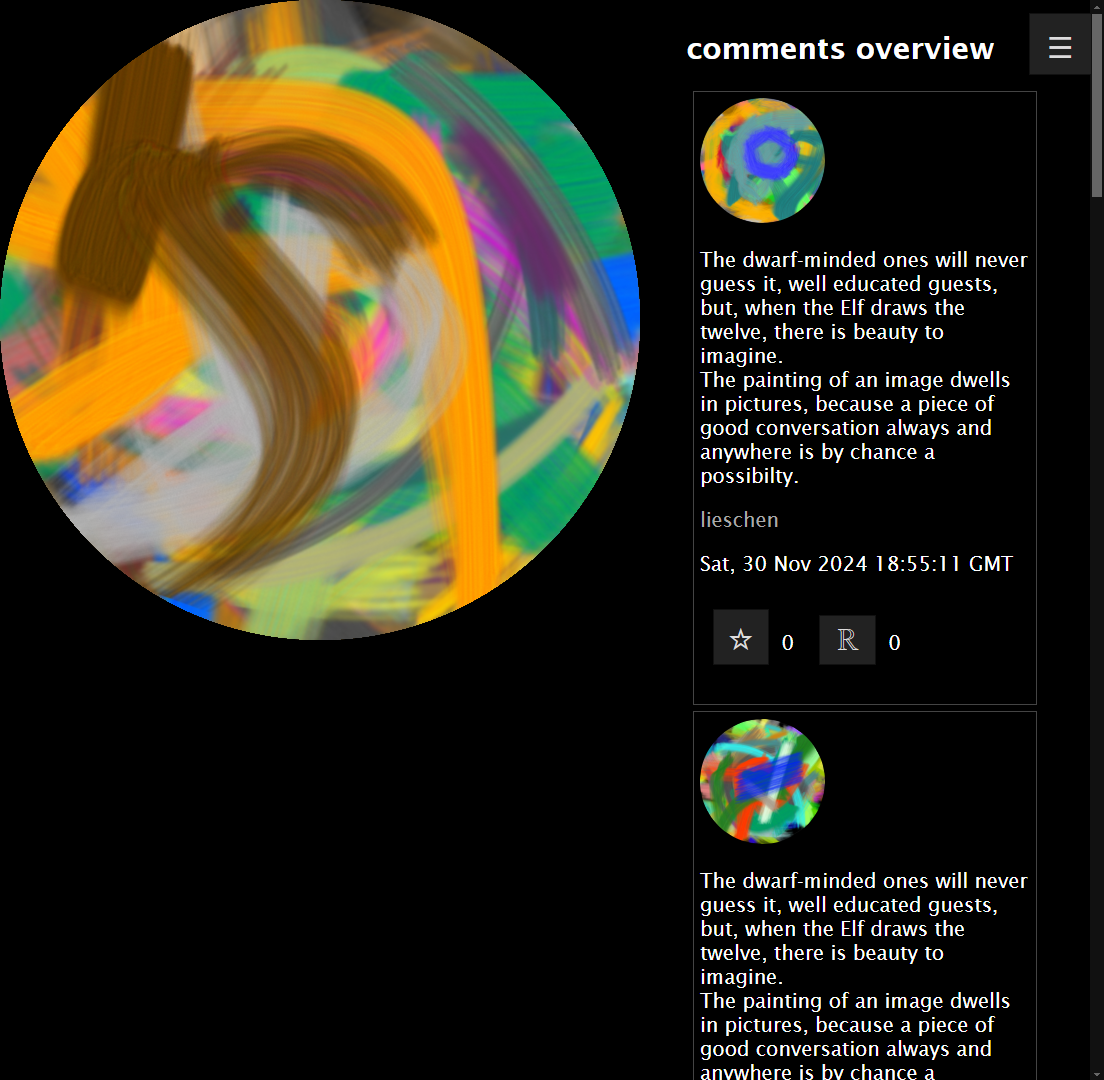 |
pattern library collection library ideas 4 library in the hunt scribble lib navigation account and counting about